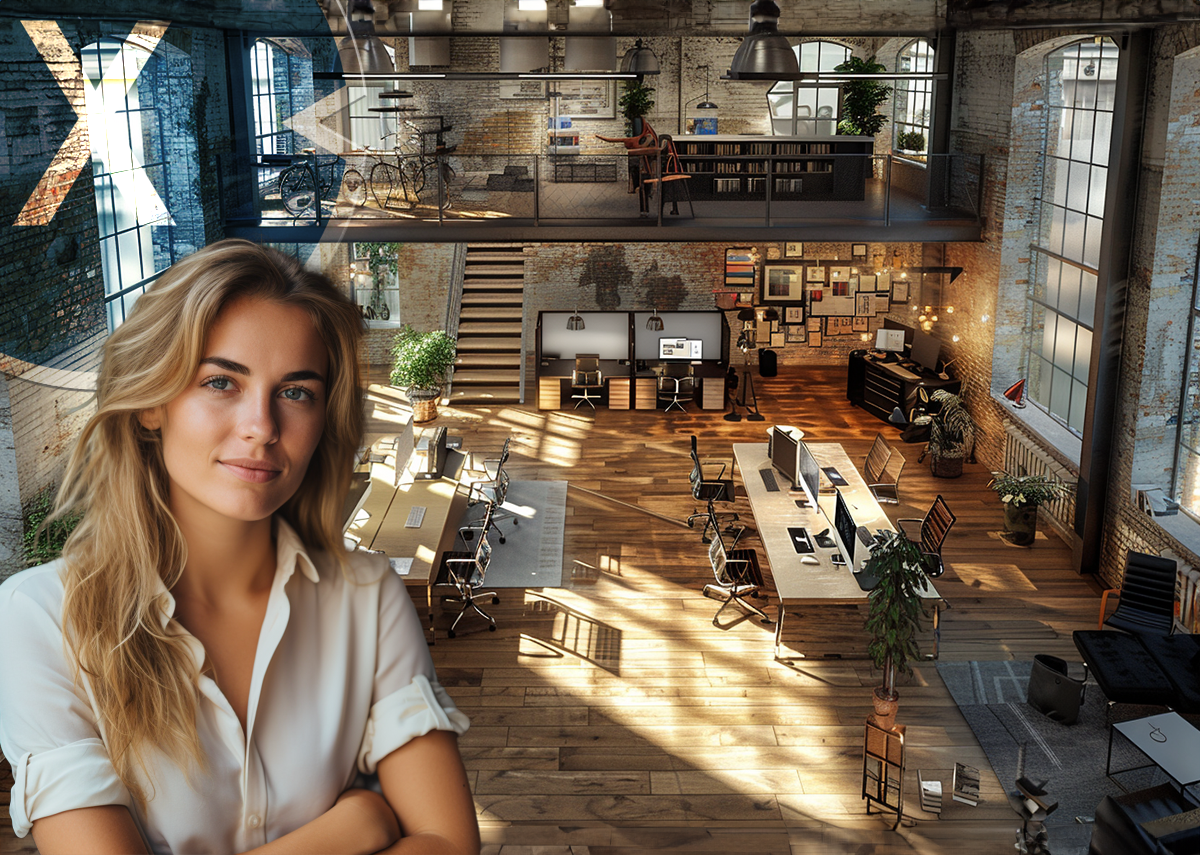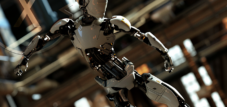Optimus Roboticus Humaniformis - From Sci-Fi to Reality: The impressive abilities of Tesla's Optimus
Language selection 📢
Published on: December 13, 2024 / Update from: December 13, 2024 - Author: Konrad Wolfenstein

Optimus Roboticus Humaniformis - From Sci-Fi to Reality: The Impressive Capabilities of Tesla's Optimus - Image: Tesla
🤖 Tesla's humanoid robot Optimus: A technological milestone
🛠️✨ Tesla's humanoid robot Optimus represents a remarkable step in the development of modern robotics and artificial intelligence. Since it was first announced in 2021, this robot has continued to evolve, opening up new capabilities and possible uses. The “Generation 2”, which was presented in 2023, impressively shows how consistently Tesla is working to combine robotics, sensors, motor systems and adaptive software in an overall package in order to handle a variety of tasks autonomously, safely and efficiently. It's not just about theoretical concepts, but about concrete applications in industry and commerce as well as in the private environment. Optimus is intended to operate where people have to carry out monotonous, dangerous or physically demanding tasks - with the long-term goal of meaningfully supplementing and relieving human work.
✨ Design and technical features 🛡️
Optimus features a sleek, humanoid design that aims to make collaboration with people as intuitive and safe as possible. With a height of around 173 centimeters and a weight of around 57 kilograms, he is comparable to an average human adult. Its housing is made of a light but robust mix of metal and plastics, which not only increases stability but also energy efficiency. The aim is to make the robot robust enough for industrial environments, but also to keep it light and agile so that it can also be used in domestic environments.
Optimus' mobility relies on a sophisticated array of approximately 40 electromechanical actuators that control his arms, legs, hands and torso. This high number of drive elements enables remarkably fluid and human-like motor skills. The robot can grip precisely, hold objects with up to 11 degrees of freedom in its hands and carry out delicate tasks without damaging sensitive objects. Thanks to his skillful fine motor skills, he is able not only to precisely position components in a factory, but also to safely carry out everyday tasks such as sorting clothes, washing dishes or even pre-sorting delicate foods such as eggs.
Another important aspect is energy management. A 2.3 kWh battery supplies Optimus with energy for several hours, with an average of up to eight hours of operation per charge possible. This makes the robot suitable for a day's work in a factory or for longer use at home before it has to return to a charging station. The balance between energy efficiency, mobility and performance is a central development goal and should be further optimized in the future.
🌐 Integration of artificial intelligence 🤯
At the heart of Optimus is the comprehensive integration of Tesla's artificial intelligence, which was originally developed for the autonomous driving functions of electric vehicles. This AI uses modern neural networks and advanced computer vision algorithms to analyze the robot's environment in real time, detect obstacles and learn complex tasks. Using cameras, sensors, gyroscopes and accelerometers, Optimus continuously records data, interprets it and makes independent decisions about its next movements. This allows it to orientate itself in changing scenarios, make corrections and even adapt movement sequences shown by humans without remote control or hard-coded routines.
Optimus' AI is continually being improved. Through machine learning and constant comparison with real operational data, the robot continuously expands its range of actions. This ability to learn is crucial in order to prepare him for new areas of application in the future. The human operator can also demonstrate certain tasks to the robot, which it then reproduces independently. In the long term, this learning ability should mean that Optimus no longer depends entirely on pre-programmed instructions for more complex activities, but rather reacts flexibly and creatively to new challenges.
🏭 Possible uses in industry ⚙️
A central area of application for Optimus is industrial manufacturing. In factories, it can integrate seamlessly into assembly lines and take on repetitive, monotonous or health-damaging tasks for people. Whether lifting heavy parts, sorting components or operating machines, Optimus is designed to help increase productivity on a large scale. Tesla has already used the first prototypes in its own battery production. There the robot helps sort battery cells or handle materials, which shows how practical its use already is.
In addition to the automotive and battery industries, similar scenarios can be imagined in electronics manufacturing, food production or the logistics sector. Optimus could sort, pick and place goods on conveyor belts in the warehouse without tiring human employees. While robots take on monotonous tasks, humans can focus on more creative, conceptual or customer-focused tasks. The use of humanoid robots like Optimus becomes part of a new division of labor in which humans and machines work together harmoniously.
🏡 Potential in the home environment 🧹
A wide range of applications also opens up in private households. In a future where humanoid robots are affordable and widespread, Optimus could take on simple household tasks such as cleaning floors, sorting laundry or preparing meals. It could support older people or people with limited mobility with daily personal hygiene, open doors, carry shopping or serve drinks. It is even conceivable to be used in child care or as a companion for people who need special support.
Another aspect is surveillance and security in the home. Since Optimus can use its sensors to register movements, temperatures or unusual events, the robot could be used as a guard, raising an alarm if necessary or informing residents of potential dangers. In the long term, an assistance system could be established that makes life more comfortable and safer without affecting the privacy of the residents.
🏥 Medical and nursing support
In healthcare, Optimus could be an important addition to the nursing workforce. Thanks to his precise motor skills, he can, for example, sort medication, transport material within a hospital or assist with physiotherapy exercises. Interaction with patients would also be conceivable, be it in rehabilitation or during movement exercises that the robot carries out according to precise instructions. It is important that human specialists always keep an overview and that the robot acts as a helpful tool, not as a replacement for human empathy or medical expertise.
🛒 Commerce, Education and Entertainment
In retail, Optimus could serve as a warehouse assistant, shelf stocker or customer service assistant. Interactions with customers are conceivable, in which the robot finds certain products, provides information or simply provides entertainment. In educational institutions, Optimus could serve as an illustrative example of modern technology and robotics by teaching students in a practical way how artificial intelligence, sensors and automation interact. Numerous scenarios are also conceivable in the entertainment sector: from interactive performances and dance performances to theme-based attractions in amusement parks.
⚙️ Challenges and technological limitations
Despite the rapid progress, challenges still remain. Previous demonstrations of the Optimus prototype made it clear that there are still differences between telework - remote control by a human operator - and full autonomy. In the initial development phases, the robot seemed less dynamic and stable than some of its other robot competitors, such as the models from Boston Dynamics. But with each new generation, Tesla narrows the gap between the demonstration object and the machine suitable for everyday use.
On the path to widespread market introduction, Tesla must also consider aspects such as security, data protection and ethical principles. A robot that operates autonomously in human environments must ensure that it does not endanger people in any situations. This includes precise movements, reliable recognition of people and objects, and the controlled use of tools or other aids. The technology may not be misused for surveillance or unauthorized data collection. Because Optimus is equipped with sensors and cameras, clear policies must be established to ensure sensitive data remains protected. The challenge is to harness the technology's immense potential without jeopardizing people's privacy and security.
🌍 Social and economic impacts
The potential mass production of Optimus at a relatively affordable price - Tesla says around $20,000 to $30,000 per unit - could have far-reaching economic and social consequences. Labor markets could change as repetitive or dangerous tasks are increasingly taken over by robots. This would potentially give people more space for activities that require human creativity, social intelligence or strategic thinking. This could not only cause a shift in the world of work, but also create new careers in which the ability to deal with advanced robotic systems becomes increasingly important.
Companies could reduce their production costs, increase productivity and at the same time reduce the burden on employees. There are opportunities for society to minimize physical work and increase quality of life through robotic support. However, the question also arises as to the fair distribution of efficiency gains. Meaningful political and social support for this development is necessary so that technological progress is used in the interests of everyone.
🔮 Potential for innovation
Elon Musk himself has described Optimus as potentially more important for Tesla's future than its own electric vehicles. This vision underlines the enormous strategic importance that Tesla attaches to the project. If Optimus can be brought to market in large quantities, it could redefine the robotics industry and pave the way for humanoid robots that can be used in almost all areas of life.
In the long term, Optimus could also serve as a platform for further innovations: It is conceivable that various software modules or specialized hardware components could be added to tailor the robot to specific industries or applications. There could be variants for the medical sector, geriatric care, agriculture or even for use in construction. Through iterative improvements, regular software updates and the use of AI-based learning algorithms, Optimus can continue to adapt to changing requirements over time.
🤖 Human-robot interaction
Optimus represents a new chapter in human-robot interaction. It combines the technical elegance of a humanoid design with highly developed AI to operate in a wide variety of areas. From the factory floor to the supermarket to the living room, Optimus creates an image of a future in which intelligent robots support human activities, reduce workloads and enable more space for creativity, education, interpersonal exchange and social progress. The coming years will show how quickly this vision can be turned into reality. But one thing is certain: With Optimus, Tesla has taken a new path that has the potential to fundamentally change robotics and its role in everyday life.
📣 Similar topics
- 📣 Revolution in robotics: Tesla Optimus in focus
- 🤖 Man and machine united: The vision behind Tesla Optimus
- 🔋 Efficiency rethought: Energy management of the Tesla robot
- 🎯 Ready for use: Optimus from industry to household
- 🛠️ Innovation in industry: Tesla's robot in practical testing
- 🏠 Everyday help of the future: Optimus in the private environment
- 🏥 Optimus as a nursing aid: opportunities in the healthcare system
- 🌍 Social and economic consequences of the robot boom
- 🚀 Technology of the future: Tesla's path to autonomous robotics
- 🧠 Learn like humans: The AI integration at Optimus
#️⃣ Hashtags: #ArtificialIntelligence #Robotics #Technology #TeslaOptimus #Future
Our recommendation: 🌍 Limitless reach 🔗 Networked 🌐 Multilingual 💪 Strong sales: 💡 Authentic with strategy 🚀 Innovation meets 🧠 Intuition
At a time when a company's digital presence determines its success, the challenge is how to make this presence authentic, individual and far-reaching. Xpert.Digital offers an innovative solution that positions itself as an intersection between an industry hub, a blog and a brand ambassador. It combines the advantages of communication and sales channels in a single platform and enables publication in 18 different languages. The cooperation with partner portals and the possibility of publishing articles on Google News and a press distribution list with around 8,000 journalists and readers maximize the reach and visibility of the content. This represents an essential factor in external sales & marketing (SMarketing).
More about it here:
We are there for you - advice - planning - implementation - project management
☑️ SME support in strategy, consulting, planning and implementation
☑️ Creation or realignment of the digital strategy and digitalization
☑️ Expansion and optimization of international sales processes
☑️ Global & Digital B2B trading platforms
☑️ Pioneer Business Development
I would be happy to serve as your personal advisor.
You can contact me by filling out the contact form below or simply call me on +49 89 89 674 804 (Munich) .
I'm looking forward to our joint project.
Xpert.Digital - Konrad Wolfenstein
Xpert.Digital is a hub for industry with a focus on digitalization, mechanical engineering, logistics/intralogistics and photovoltaics.
With our 360° business development solution, we support well-known companies from new business to after sales.
Market intelligence, smarketing, marketing automation, content development, PR, mail campaigns, personalized social media and lead nurturing are part of our digital tools.
You can find out more at: www.xpert.digital - www.xpert.solar - www.xpert.plus



























